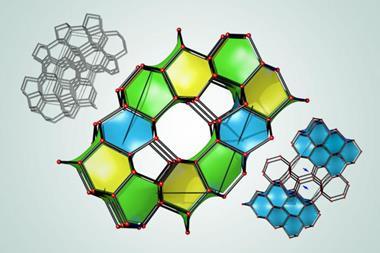A synthetic material to rival the hardness of diamond
Inorganic chemists in the US have synthesised a material that rivals the hardness of diamond, without needing to use extremely high pressure. A team led by Hsiu-Ying Chung at the University of California made ’superhard’ rhenium diboride (ReB2) at ambient pressure and confirmed its hardness by scratching the surface of a diamond. The discovery will hopefully provide cheap solutions to industrial applications where diamond is unusable or unaffordable.
Diamond is the hardest known substance and has long been involved in the cutting and drilling industries, but there are a few situations where it cannot be used. For example, when cutting steel or other ferrous metals, iron carbides form, causing the diamond to degrade. Alternatives to diamond are available, such as cubic boron nitride (BN), but this must be synthesised under extreme pressure and temperature (greater than 50 000 atmospheres and 1500?C), making it expensive.
Chung’s team heated rhenium and boron powder in a sealed tube for five days at 1000?C and produced a ReB2 ingot with hardness comparable to cubic BN. The reason for its hardness is a combination of high electron density and short, highly covalent bonds similar to those in diamond. Rhenium metal is relatively soft (due to non-directional metallic bonding) but boron atoms can be incorporated into the lattice with only a 5 per cent expansion. This results in a very tightly-packed structure and the shortest metal-metal bonds of any known transition metal-diboride.
Paul May, a diamond expert at the University of Bristol, UK, told Chemistry World: ’Some very hard materials have been made at lower pressures, but to make bulk amounts normally requires extremely high pressure. The reason is that superhard materials are usually very dense - to increase the density you need to squash it until it changes phase into one that’s stable. A fabrication process for bulk amounts of a superhard material at ambient pressure would be a major breakthrough useful for many industries.’
Lewis Brindley
References
,Science316, 436







No comments yet